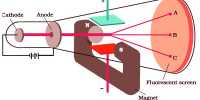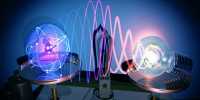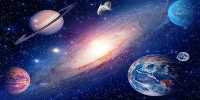The well-known three-body issue is a physics puzzle that dates back to Newton’s time. It has never really been solved since it cannot be, as proved in 1899. However, just because there is not a perfect answer to an issue does not mean we cannot get closer and closer. The latest advancement in three-body problem solving employs a beloved technique of mathematicians: the inebriated stroll. After demonstrating the workings of gravity, Newton set about calculating how the gravitational fields of two enormous objects would interact, allowing for the prediction of orbits indefinitely into the future. However, the reality is not so straightforward. Every planet in the Solar System, including asteroids, tugs on each other.
Others are big enough or close enough that their influence matters, causing three, four, or five-body problems. Some do it so gently that their influence can be ignored, but for many purposes, others are big enough or close enough that their influence matters, causing three, four, or five-body problems. Newton and many of the finest minds who came after him tried to figure out how such interactions work. The finding that orbits in which the gravitational fields of three or more objects interact is intrinsically unpredictable in the end prompted continuous insults that physicists had reached the limits of their abilities. It, however, spawn the discipline of chaos theory, which has proven invaluable in a variety of scientific fields, including meteorology.
Finding ways to enhance solutions while acknowledging that they will never be perfect has proven to be a huge benefit for research, and a recent article published in Physical Review X promises to go even farther. Yadav Ginat, a student at Technion-Israel, found that statistical methodologies might be effective in situations when total assurance is unachievable. Even if you do not know where opposing gravitational forces would transport objects engaged in a three-body tug of war, you may use probability to anticipate outcomes and then select which routes are so unlikely that they can ignored.
Ginat and his supervisor, Professor Hagai Perets, used a mathematical model known as the “drunkard’s stroll” to do this. The drunkard’s walk, which was originally based on a hypothetical individual whose steps are individually unpredictable but skewed in one direction, becomes frequently utilized in statistics and economics. A simple illustration is a person standing near a cliff edge who has a two-thirds probability of going towards safety and a one-third chance of walking towards tragedy with each step.
Ginat modeled three-star systems to assess how probable it was that one would expelled, the stellar equivalent of walking into the abyss, to highlight the process’s power. The majority of the stars in the galaxy are binary pairs. Single stars, such as the Sun, are uncommon, but triple systems are much unusual. Unless one star is so huge that the others act like planets, they are typically only temporary arrangements. Interactions between stars have long been known to induce ejection, but Ginat and Perets describe the probability for varying distances between the two closest stars.
Their model illustrates a sequence of near encounters before one star (not always the first outsider) gets deleted into the great beyond, and it may even include phenomena like tides, which were previously dismissed as too complicated. “In 2017, while I was an undergraduate student, we came up with the random walk model,” Ginat said in a statement. “Prof. Perets offered a course in which I had to prepare an essay on the three-body issue.
We didn’t publish it at the time, but when I began my Ph.D. program, we decided to expand and publish it.” The findings will help us better comprehend dense star clusters, where black holes and neutron stars collide with big stars, causing observable gravitational waves. It might also be advantageous for spacecraft attempting to maintain equilibrium in the face of gravitational turbulence.
















